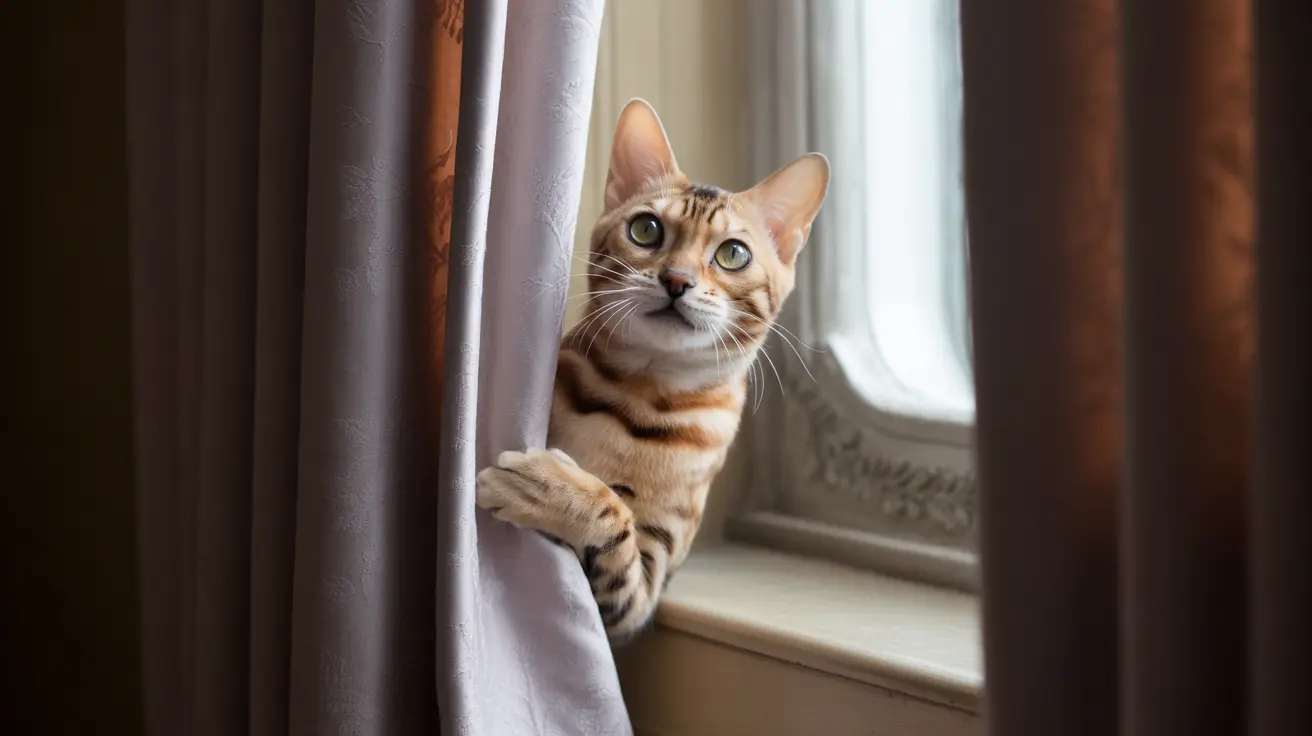Cats are fascinating creatures with complex behaviors, and one of their most endearing traits is their love for interactive play. Many cat owners have witnessed their pets engaging in what appears to be a game of hide and seek, but is this really what's happening? Let's explore this intriguing behavior and understand why cats seem to enjoy this playful activity.
The Natural Instinct Behind Hide and Seek
Cats are natural-born hunters, and their tendency to play hide and seek is deeply rooted in their wild ancestry. This behavior mimics the hunting and stalking techniques that wild cats use to survive. When your cat ducks behind furniture or peeks around corners, they're actually practicing vital predatory skills in a safe, domestic environment.
How Cats Initiate Hide and Seek
Your feline friend might start a game of hide and seek in several ways. They might suddenly dash behind a curtain and peek out at you, or crouch behind objects while wiggling their rear end in preparation for a playful pounce. These behaviors are their way of inviting you to participate in their game.
Common Hide and Seek Behaviors
- Crouching behind objects
- Darting between hiding spots
- Peeking out to check if you're watching
- Quick sprints followed by sudden stops
- Playful ambush attempts
Benefits of Playing Hide and Seek with Your Cat
Engaging in hide and seek with your cat offers numerous advantages for both mental and physical well-being. This interactive play provides essential exercise, mental stimulation, and strengthens the bond between you and your pet. It's particularly beneficial for indoor cats who need outlets for their natural hunting instincts.
Mental Stimulation
Hide and seek challenges your cat's problem-solving abilities and keeps their mind sharp. It satisfies their need for mental engagement while providing entertainment in a controlled environment.
Physical Exercise
The running, stalking, and pouncing involved in hide and seek helps keep your cat physically active, which is crucial for maintaining a healthy weight and good muscle tone.
Safety Considerations
While hide and seek is generally safe, there are some important precautions to keep in mind:
- Ensure hiding spots are free from hazards
- Avoid small spaces where your cat could get stuck
- Keep play areas away from breakable items
- Monitor your cat for signs of stress or fatigue
Making the Most of Hide and Seek Sessions
To create engaging play sessions:
- Use toys to enhance the experience
- Vary hiding locations to maintain interest
- Keep sessions short but regular
- Reward participation with treats or praise
Frequently Asked Questions
Do cats naturally play hide-and-seek, and why do they enjoy this game?
Yes, cats naturally play hide-and-seek as it mirrors their innate hunting behaviors. They enjoy this game because it allows them to practice stalking, pouncing, and ambushing in a safe, playful context.
How can I play hide-and-seek safely and effectively with my cat at home?
Start by choosing safe hiding spots, maintain consistent play rules, and use toys or treats to encourage participation. Ensure all hiding places are easily accessible and free from hazards.
What signs show that my cat wants to play hide-and-seek versus hiding due to stress or illness?
Playful hiding is accompanied by alert body language, dilated pupils, and engaging behavior. Stress-related hiding usually involves prolonged isolation, defensive postures, and may be accompanied by other concerning symptoms.
Which cat breeds are more likely to enjoy interactive games like hide-and-seek?
Active breeds like Bengals, Siamese, and Abyssinians typically show more interest in interactive games. However, any cat can enjoy hide-and-seek regardless of breed.
What are the mental and physical benefits of playing hide-and-seek with my cat regularly?
Regular hide-and-seek play provides mental stimulation, physical exercise, stress relief, and strengthens the bond between cat and owner. It also helps prevent behavioral issues caused by boredom.
Conclusion
Hide and seek is more than just a game for cats – it's a natural behavior that provides essential mental and physical benefits. By understanding and encouraging this playful activity, you can help your cat stay healthy, happy, and engaged while strengthening your bond together.






